When To and How To Graft Fruit Trees
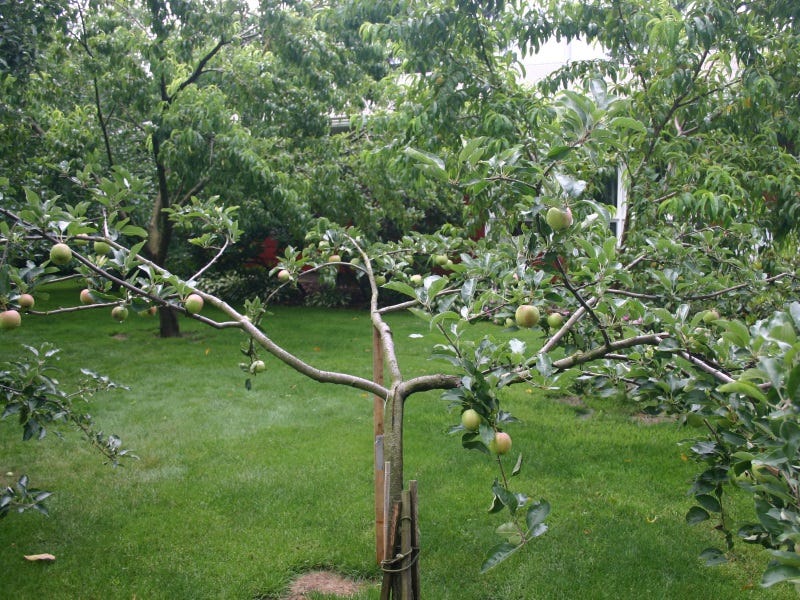

Despite Johnny Appleseed planting fruit trees throughout the Midwest—by sowing handfuls of seeds on his land and selling the small trees to local farmers—all modern fruit trees are propagated by grafting the desired variety (called a scion) to the appropriate rootstock (meaning another tree) for your region. Appleseed’s trees produced what we call “spitters” that produced fruit that’s best suited for cider. Since most of us desire good eating apples, grafting is the only way to control the variety.
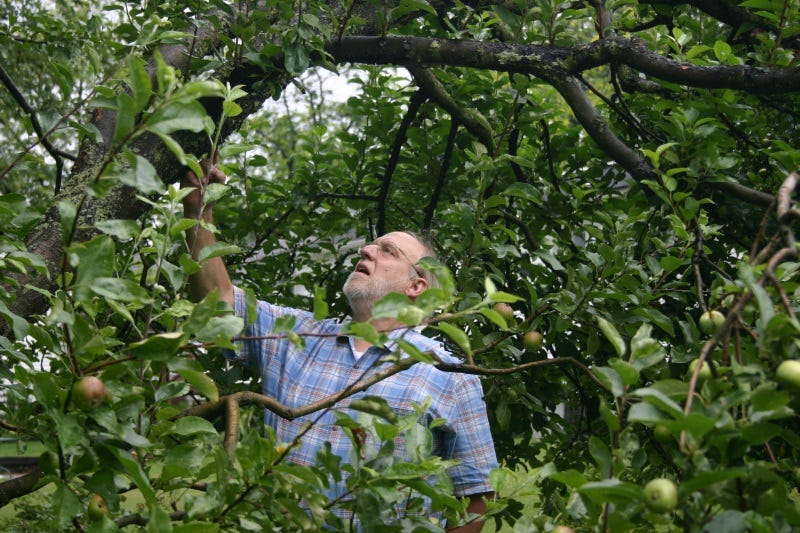
My father grafted for years, often having several types of apples on the same tree. That grafting and mixed variety always intrigued me, so more than a decade ago I visited the friend who taught him how to graft. He boasts of having nearly 200 varieties in his small, suburban yard and was eager to give me a few pointers on successfully grafting. After dozens of attempts over the years, grafting is something I enjoy doing early each spring to propagate the varieties I love most and to try new ones without waiting for years for a tree to grow large enough to bear fruit. This way, I can enjoy apples from the new variety within a couple of years.
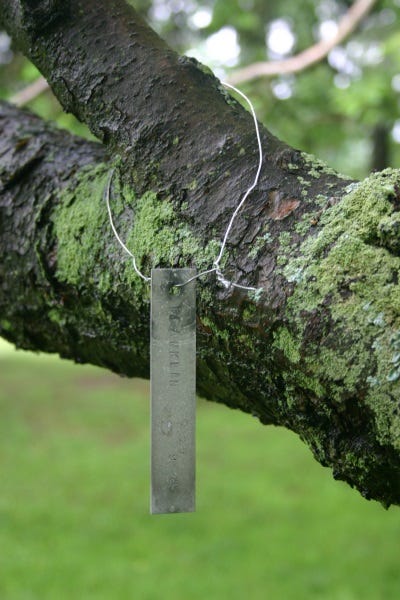
Right now, winter, is the time to make your grafting plans for the year, when the trees are in deep dormancy from December through February. If you are ordering new scion varieties through a mail-order company, place your order before they’re sold out for the season. If you want to grow a favorite apple from a friend, now is the time to cut the scions for grafting during spring.
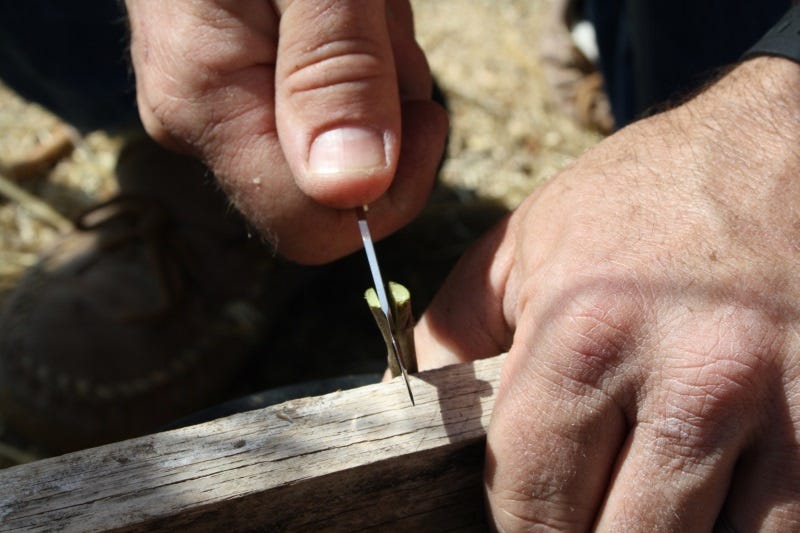
Having good roots
As with anything, a solid foundation is important. For apples and other fruit trees, this means choosing a rootstock that is hardy and thrives in your region. In addition, it must have desirable characteristics, such as fire blight resistance or a desired overall height.
Some home orchardists lean towards dwarf trees because they are easy to care fore and harvesting from smallish trees, that range between six to twelve feet high, is easy. Trees can be planted closer together, as well, allowing more of them in a small area. A drawback of dwarf trees is their vulnerability in windstorms due to mediocre root systems. Dworfs also tend not to live as long as standard types and last only about 15 years.
Semi-dwarf trees grow from 12-15 feet tall, making them easy to harvest and prune. And while they live longer than dwarf trees, typically between 20 and 30 years, they still don’t last as long as standard varieties, which may live 40 years or longer, in some regions.
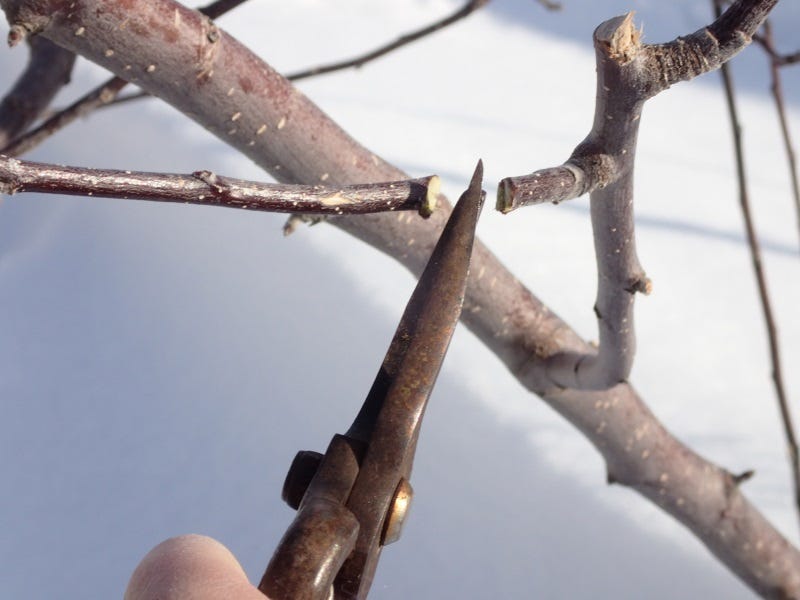
How to cut your own scions
Scions are the specific variety you choose to add to your rootstock or established tree, and while you can buy varieties from a reputable company, you can also cut your own. Look for new growth from last year at the ends of branches that growing upwards at approximately a 45 degree angle (do not cut the water sprouts, meaning the extraneous shoots that grow vertically from branches and root systems). These will be smooth sections where the buds are still tight against the wood.
Using a sharp, clean hand-pruner, cut pieces of branches that are roughly the diameter of a pencil and about 12 inches long, Then place the pieces in a plastic bag with a folded, slightly damp paper towel. Keep the same varieties together and label the bag. Never assume you will remember.
You can store scions in your refrigerator’s vegetable tray until spring, when you are ready to graft.
A simple cleft graft
When to graft fruit scions is critical to success. The optimum time is when there is active growth, yet there is no bud break. In Montana and the Inland Northwest, this is typically around late April or early May.
While there are several tried and true grafting techniques, one of the easiest for beginners is the cleft graft.
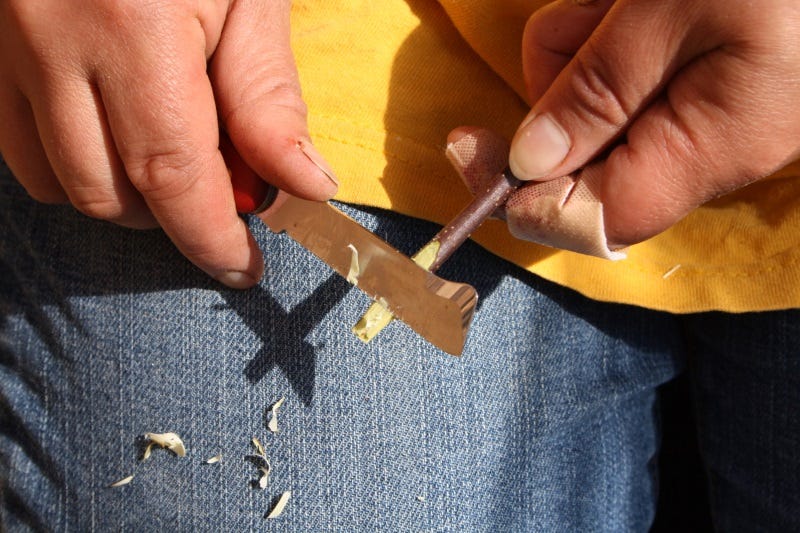
Before grafting, you need a few items on-hand, which will make you efforts easier and safer, with a greater chance of success. First and foremost, use a very sharp knife. Better yet, use a grafting knife. A dull blade is asking for a slip that results in a potentially severe cut. I have scars from the experience of using a dull one. And it’s preferable to wear gloves to protect your hands from accidental slips, even from a good knife.
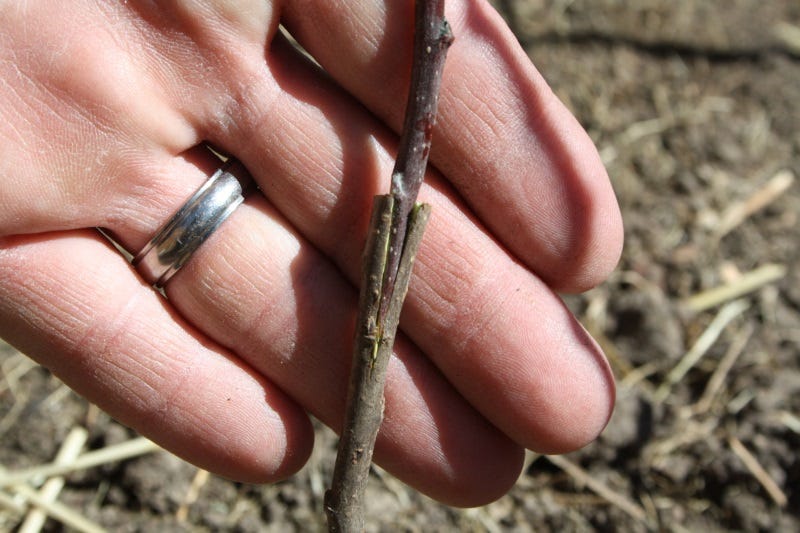
Next, you need some way to bind and seal the graft, which will allow it to heal. This can be special grafting tape, electrical tape, or grafting wax, depending on availability and preference. I’ve often used electrical tape because it was all I had on-hand, although I prefer grafting tape whenever I remember to order it. Wax hasn’t worked as well for me since we tend to have very windy conditions in the spring, resulting in a broken union unless it is well supported.
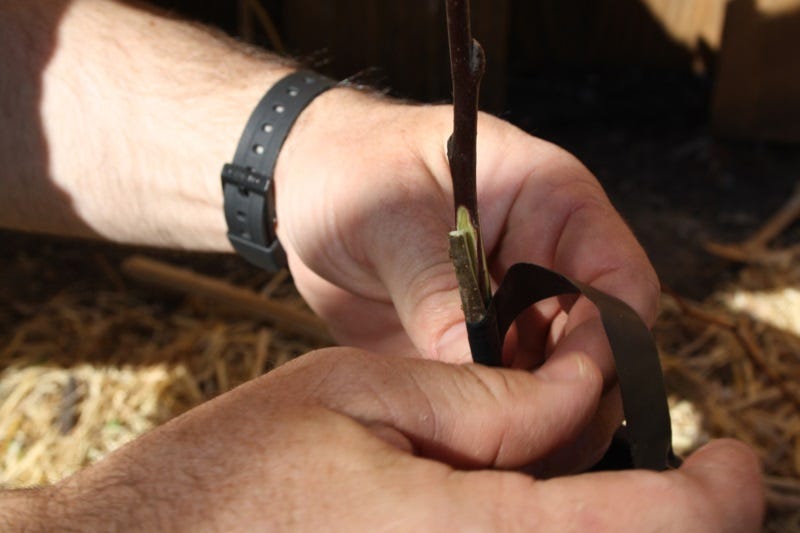
To make the graft, choose a branch on your rootstock that is roughly the same diameter of your scion, although with the cleft graft, you can add the scion onto larger branches or even on top of rootstock. Use the knife and carefully cut the rootstock down the middle of the branch on whatever rootstock you are using. Make the cut approximately an inch-and-a half long. Before joining to the rootstock, make angled slices, also roughly an inch and a half long, on either side of the scion. This exposes the cambium of the scion and matches it on the rootstock. Insert the scion into the cut made in the middle of the rootstock branch, hold fast, and wrap with tape or seal the union with the wax. And don’t forget to make some sort of label so you know which variety you’ve grafted.
If you use electrical tape, carefully slice it along the side in four to six weeks, which allows the expanding growth to shed the tape without killing the graft union.
Grafting is an enjoyable pursuit
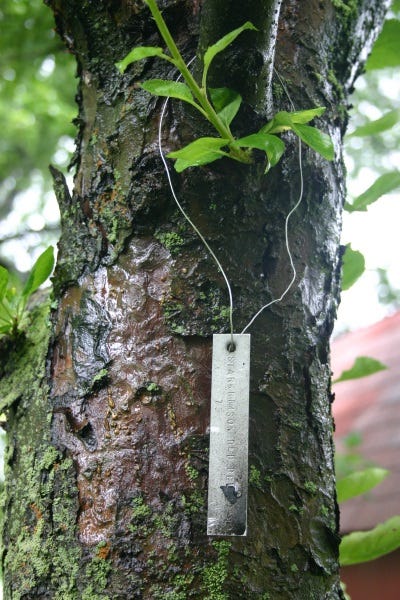
There is never one-hundred percent success when grafting, but the more you practice, the easier it is to give your scions a fighting chance. Plus, with the hundreds of apple varieties available to us, grafting allows us to expand our home orchards beyond what is commercially available. Before long, you’ll be like the rest of us happy grafters, asking friends if we can visit during the winter with pruners in hand.
